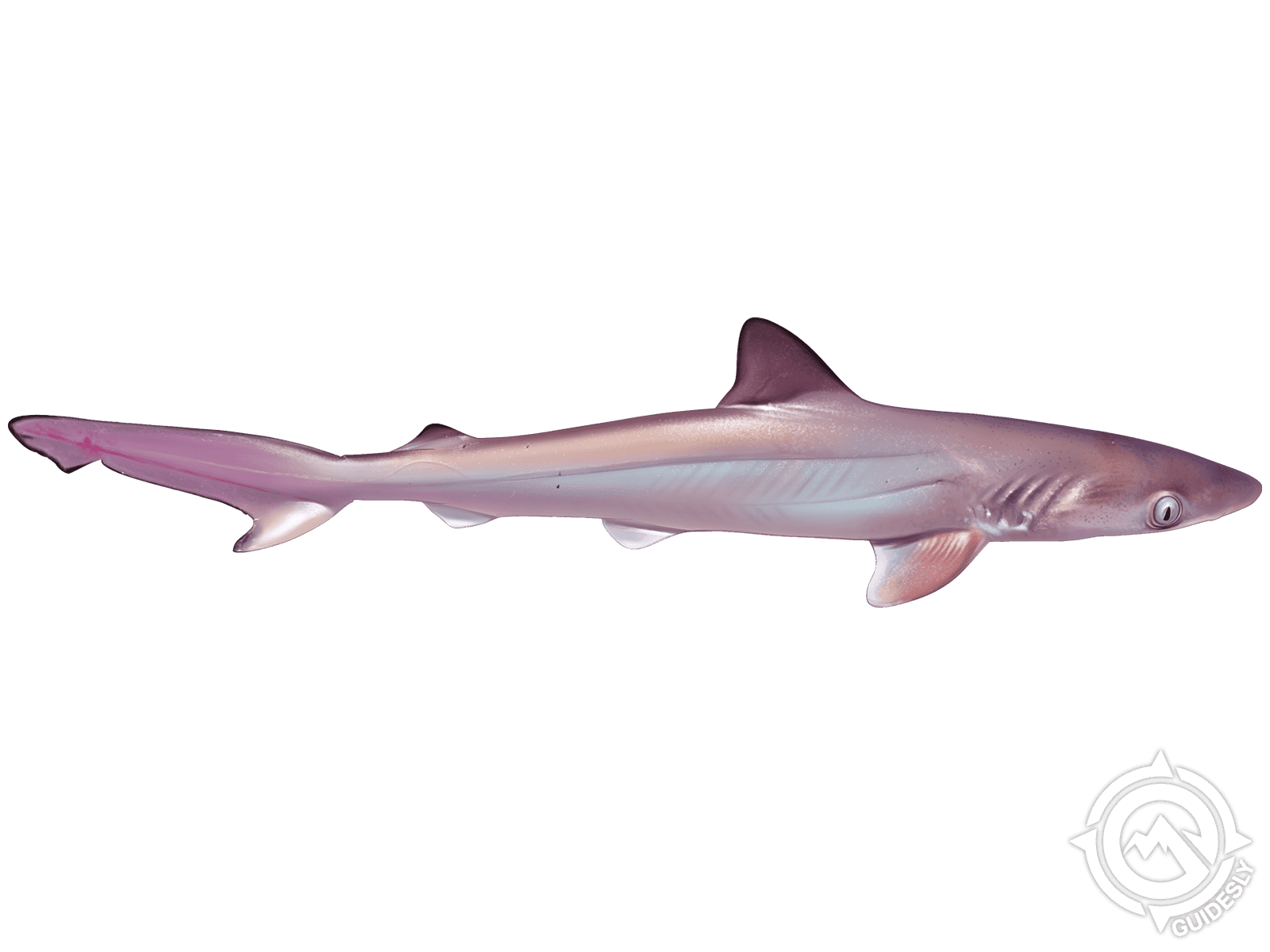Atlantic Sharpnose Shark

Species Details
Rhizoprionodon Terraenovae
Carcharhinidae
Carcharhiniformes
Shallow, Warm Water
7 - 9 lbs.
39" - 48"
Atlantic Sharpnose Shark (Rhizoprionodon terraenovae) Fish Description
As the name suggests, the Atlantic Sharpnose Shark (Rhizoprionodon terraenovae) is a requiem shark that has a long, pointed snout and is mainly found in the western Atlantic. It has a long streamlined body that is brownish to olive-gray in color on most of its body, except for the white underside. Aside from its coloration, it can easily be recognized through the small white dots on its sides and the dorsal and caudal fins which are black tipped. It’s also one of the smallest shark species, growing less than four feet in length at a maximum.
Like all sharks, the Atlantic Sharpnose Shark is a carnivore and an adept predator. It feeds mostly on small fishes such as jacks, wrasses, silversides; although it can also prey on various marine invertebrates such as worms, shrimps, crabs, and mollusks. Though they mostly inhabit coastal areas for most of the year, the females would migrate offshore to deeper waters after mating; only returning ten to eleven months later to give birth to live sharpnose pups.
Because they mostly inhabit near the shores of our Atlantic waters, the Atlantic Sharpnose Shark often comes into contact with humans, especially during summer when people flock to our beaches. They don’t, however, post much threat to us because of their small size and their bites aren’t that serious.
The Atlantic Sharpnose Shark is a popular gamefish for fishing enthusiasts as well as for commercial fishers. Its meat is said to be quite tasty and it can also be used as bait for larger species of shark. Aside from their meat, this shark is also fished as it’s a popular aquarium fish for both private and public aquarists. The good news is, even if they’re widely fished, they are still quite abundant in our waters.
Atlantic Sharpnose Sharks Interesting Facts
- Atlantic Sharpnose Shark can only grow as much as four feet in length and weigh nine pounds.
- Females are slightly bigger than males.
- Mating season starts in late spring to early summer.
- Females migrate to deep parts of the ocean during gestation.
- They will return ten to eleven months later to shallow waters to give birth.
- They are viviparous, which means they give birth to live ones.
- They give birth to a litter at an average of four pups.
- Aside from humans, larger species of sharks are known predators.
- They are abundant along the shores of South Carolina, Florida Keys, and the Gulf of Mexico.
- Anglers can fish for Atlantic Sharpnose Sharks all year round.
- Some anglers targeting other fish consider these sharks a nuisance as they tend to snatch away hooked fishes.
Atlantic Sharpnose Shark Average Size and Swimming Speed
The average size of the Atlantic Sharpnose Shark is between two and three and a half feet long and weighs at an average of six to nine pounds. Much like other sharks, they can swim fast at average speeds of about five miles per hour—perhaps even faster when hunting.
Atlantic Sharpnose Shark Habitat and Distribution
Atlantic Sharpnose Sharks are endemic along the coasts of western Atlantic—as far north as New Brunswick in Canada to the waters of southern Brazil. In the US, they are more commonly found in the warm-temperate to tropical waters along the shores of South Carolina, Florida Keys, and the Gulf of Mexico.
Though the females sometimes migrate to deeper waters during pregnancy, they tend to stay near the shores—particularly along the surf zones, bays, and even in the brackish waters of estuaries.
Atlantic Sharpnose Shark Fishing Tips
The Atlantic Sharpnose Shark is probably one of the most caught species of shark in the US given their habitat and their abundance in our Atlantic waters. You can certainly fish for these sharks all year round. It is also easy to hook because they would attack any bait you might present—dead or alive. The fun starts, however, when you hook one as they are pretty strong swimmers, even with their small size. You might also need a landing net and gloves for you to be able to land them without having to worry much about the shark’s rough skin and of course its razor sharp teeth.







